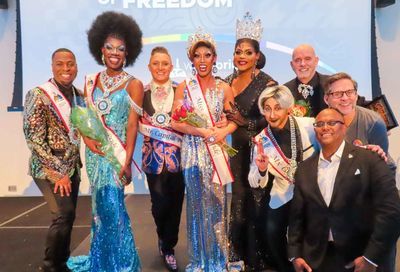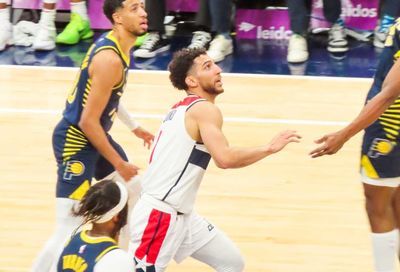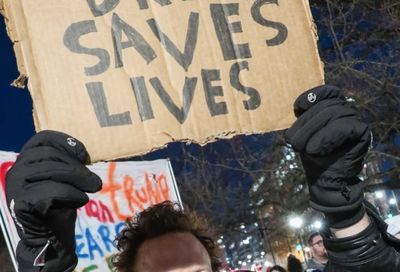Hipster Gays
Commentary: In Exile
I left Brooklyn for all the wrong reasons. My first year in New York, I was a resident of that increasingly sought after borough, first in a section called Bay Ridge, and then in the painfully super-trendy neighborhood of Williamsburg.
The word Williamsburg has taken on an electrical charge in this city. The neighborhood has taken hip to frightening new heights. Its residents carry empty guitar cases as accessories and wear nothing but nothing but vintage. Telling someone you live there is to instantly brand yourself; your actual persona is superceded by the Williamsburg “type.” I came to dread the inevitable question: “Oh, where in Brooklyn?” “Uh, Williamsburg,” I’d mutter, sure that they were already internally processing a wisecrack: So where’s your trucker hat?
I left not by choice, but because I was ejected from my apartment by a woman who still owes me $750. Now I live in Manhattan, where at least the excruciatingly hip are diluted by throngs of random others. Williamsburg, like many hip neighborhoods, was pioneered largely by the gays, who proceeded to spend ample incomes on converting abandoned factories into lofts with exposed brick and theater windows.
But the gays in Williamsburg are no longer merely hip. They’re hipsters. In fact, gays everywhere, no longer content to renovate only factories, are renovating their personas into hipster personalities, guitar cases and vintage apparel included.
The hipster gay seems to be overtaking the flashy gym gay as the primary gay stereotype. The hipster gay has Conor Oberst’s hair and, in many cases, Conor Oberst’s body as well. Large muscles are not hip to the hipster gay. The hipster gay wears a 1970s necktie (around his neck, not in the collar of his shirt), and a hoodie underneath a frayed, pin-striped sport jacket. The hipster gay’s jeans are tastefully torn, his Converse sneakers appropriately ragged.
Despite this, the hipster gay, I think, is not all that different from the flashy gym gay, whose shiny Adidas pants and striped rugby shirt seem designed to emulate a heterosexual sports enthusiast. The hipster gay emulates a straight boy as well, one that plays bass for a band called The Pun Makers and drinks blue-collar beer and dates a girl who wears thick-rimmed glasses and looks vaguely like Velma from Scooby-Doo.
I’m still trying to decide if this is progress. I was always sort of bothered by the fact that so many of the shiny Adidas gay men seem determined to look like the frat boys who despised us (and still do). It’s like the abuse survivor who grows up, has kids, and beats them for spilling their Kool-Aid during breakfast.
But hipsterism is unavoidable at the moment. Wes Anderson’s stratospheric buoyancy is the result of films that appeal to the hipster ideal: That the world is a bleak-yet-poignant still life. For straight boys (and we are mainly talking about boys here — lesbians have been hipsters far longer than it’s been cool), this is merely a popularization of a post-punk culture that’s existed more subtly for years.
For the gays, I think it’s a little more complicated. Throughout the eighties, when many people were getting rich and many gays were getting dead, irony was a luxury that couldn’t be afforded by a community facing a major problem. The Conor Oberst pale and emaciated body was ubiquitous, but not for fashionable reasons. More gays dressed as poor and desperate because more gays were poor and desperate. As unappealing as the current American climate is, the eighties sucked more.
On the other hand, there’s something refreshing about the gay hipster rejection of house music and creatine deltoids. I remember when these two guys started a small gay party in D.C. called Feint at the club Staccato next door to the Duplex Diner. It wasn’t at all as if they were generating a trend — just the opposite, actually. There was this feeling of relief. People were like, finally! I think we can feel just as pressured to act gay by other gays as we did to pass for straight by the high school homophobes we now dress like.
But now that hipster gay is so popular, now that it’s the new gym queen, I feel a little bit inclined to do it myself. I like dressing up like I play bass for The Pun Makers. I like an ironic haircut. I didn’t grow up in the eighties. I was twelve when the eighties ended. When you’re twelve, the eighties isn’t The Eighties. It’s just life. And in a town in suburban-rural Massachusetts, life doesn’t include AIDS or anti-gay job discrimination. I vaguely remember my parents hating a guy named Reagan, but I probably thought it was some irritating person who lived in our town.
There’s this never-ending struggle to belong to your subculture and simultaneously avoid being branded by it. I feel that way about being gay just as much as I feel it about being recognized as what some might consider (gulp) a hipster. Hell, I’d even still prefer Williamsburg if I didn’t have to say that I lived there. In the end, it’s really just that same old struggle against dilution for anyone who happens to live in a city of random others.
Support Metro Weekly’s Journalism
These are challenging times for news organizations. And yet it’s crucial we stay active and provide vital resources and information to both our local readers and the world. So won’t you please take a moment and consider supporting Metro Weekly with a membership? For as little as $5 a month, you can help ensure Metro Weekly magazine and MetroWeekly.com remain free, viable resources as we provide the best, most diverse, culturally-resonant LGBTQ coverage in both the D.C. region and around the world. Memberships come with exclusive perks and discounts, your own personal digital delivery of each week’s magazine (and an archive), access to our Member's Lounge when it launches this fall, and exclusive members-only items like Metro Weekly Membership Mugs and Tote Bags! Check out all our membership levels here and please join us today!




















